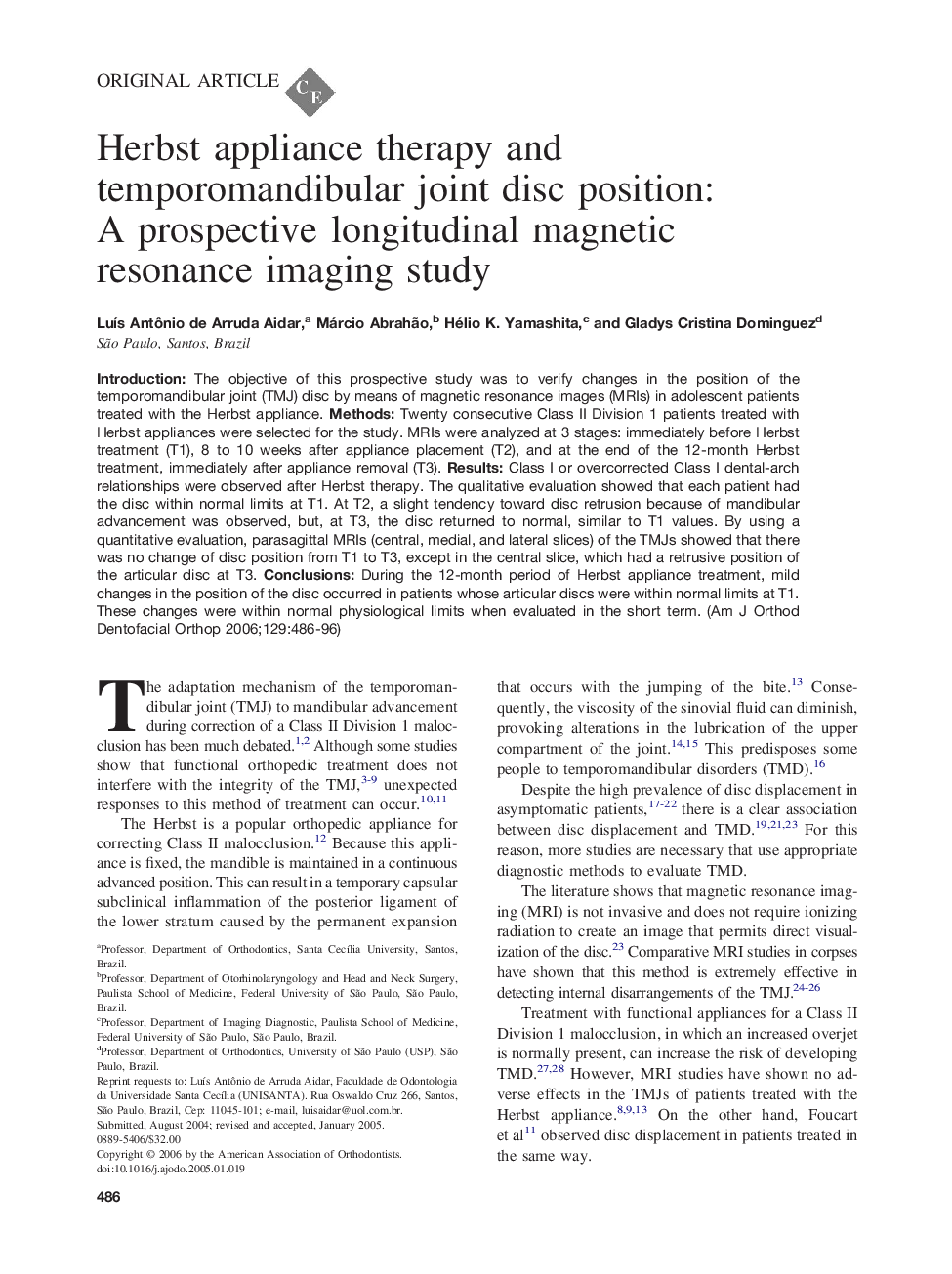| Article ID | Journal | Published Year | Pages | File Type |
|---|---|---|---|---|
| 3120497 | American Journal of Orthodontics and Dentofacial Orthopedics | 2006 | 11 Pages |
Introduction: The objective of this prospective study was to verify changes in the position of the temporomandibular joint (TMJ) disc by means of magnetic resonance images (MRIs) in adolescent patients treated with the Herbst appliance. Methods: Twenty consecutive Class II Division 1 patients treated with Herbst appliances were selected for the study. MRIs were analyzed at 3 stages: immediately before Herbst treatment (T1), 8 to 10 weeks after appliance placement (T2), and at the end of the 12-month Herbst treatment, immediately after appliance removal (T3). Results: Class I or overcorrected Class I dental-arch relationships were observed after Herbst therapy. The qualitative evaluation showed that each patient had the disc within normal limits at T1. At T2, a slight tendency toward disc retrusion because of mandibular advancement was observed, but, at T3, the disc returned to normal, similar to T1 values. By using a quantitative evaluation, parasagittal MRIs (central, medial, and lateral slices) of the TMJs showed that there was no change of disc position from T1 to T3, except in the central slice, which had a retrusive position of the articular disc at T3. Conclusions: During the 12-month period of Herbst appliance treatment, mild changes in the position of the disc occurred in patients whose articular discs were within normal limits at T1. These changes were within normal physiological limits when evaluated in the short term.
